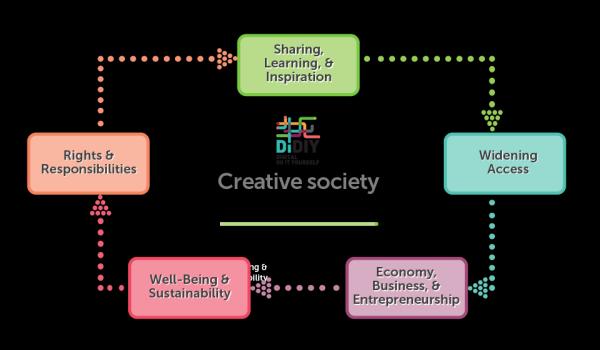The biggest Digital DIY revolution should be invisible
and we could use one or two of them right now…

<u><em><strong>CAPTION:</strong>
<a href="http://www.didiy.eu" target="_blank">The Digital DIY Manifesto</a>
</em></u>
Back in 2016, Simone Cicero wrote on CheFuturo (Italian) that:
- [in general] we should move from the PITO paradygm (Product In – Trash Out) which considers urban conglomerates as huge consumers and waste producers, to a new one called DIDO (Data in – Data Out), in which cities function as collective brains, able to use and reinterpret knowledge, in order to support sustainable, local, circular production
- [however, there is a big obstacle in the path to that vision] “Finding a solution to one’s problem is still too difficult”. Cicero explains this by telling how he wanted to 3D print a spare part for a stroller, which was not available on the market, and soon gave it up, for several valid reasons: besides the fact that the stroller itself was never designed to be easily repairable, he simply had not enough time to design and 3D print a spare part from scratch, by himself.
Cicero concluded that “[problems like these] remain an open issue for which the little big makers revolution has not provided really effective answers yet”. As a consequence, he wrote,
“I believe the time has come to question the capability of the maker movement to really change the future of production and that of cities: if it will change them, it likely won’t be thanks to yet onr more 3D printing course organized by some evangelist, but thanks to a capability of designing and producing in ways that are convenient for customers who couldn’t care less of revolutions, and just want products that don’t break, and when they do can easily be fixed without turning their daily routines upside down”.
Three years ago, the DiDIY research project of which I was a member, after independently looking in depth at the same issues, came to very similar conclusions. You can read them in the official report on Digital DIY risks, synergies and education. And you should, because that is stuff that in these times of economy wrecked by COVID19 could be very handy.
(This post was drafted in May 2020, but only put online in August, because… my coronavirus reports, of course
Image source: Spaghetti Code…
Who writes this, why, and how to help
I am Marco Fioretti, tech writer and aspiring polymath doing human-digital research and popularization.
I do it because YOUR civil rights and the quality of YOUR life depend every year more on how software is used AROUND you.
To this end, I have already shared more than a million words on this blog, without any paywall or user tracking, and am sharing the next million through a newsletter, also without any paywall.
The more direct support I get, the more I can continue to inform for free parents, teachers, decision makers, and everybody else who should know more stuff like this. You can support me with paid subscriptions to my newsletter, donations via PayPal (mfioretti@nexaima.net) or LiberaPay, or in any of the other ways listed here.THANKS for your support!